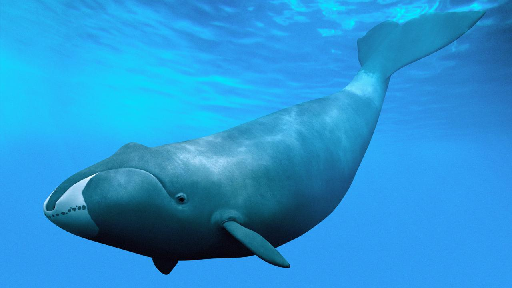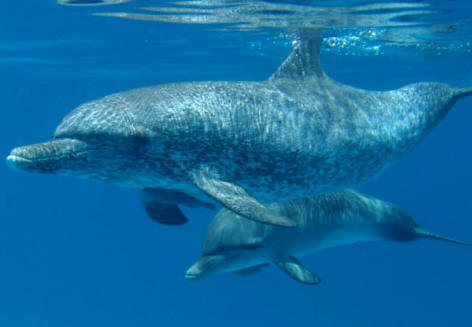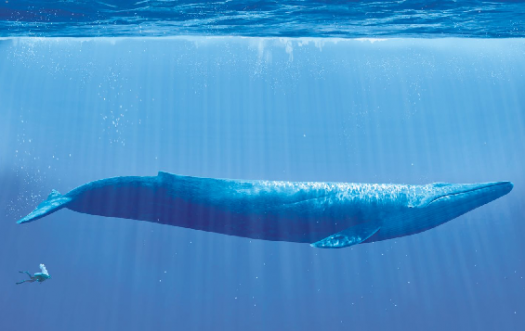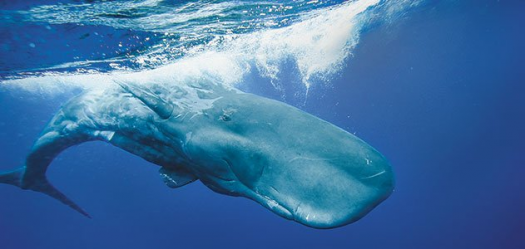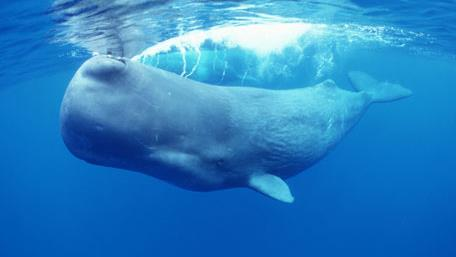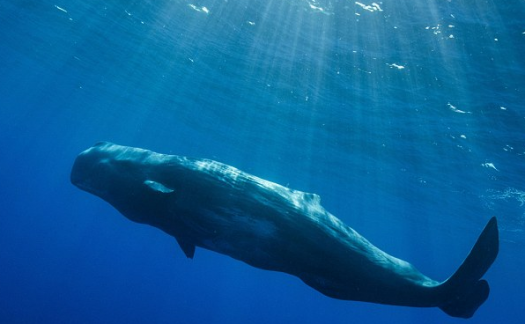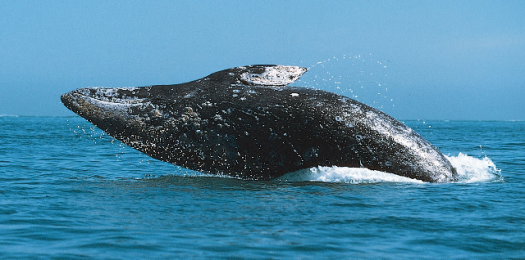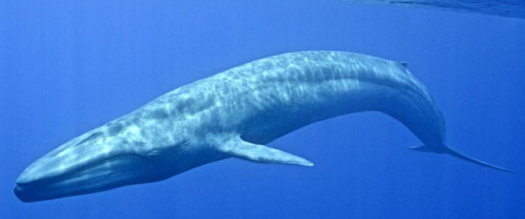The Ultimate Whales Trivia Quiz
(472).jpg)
How much do you know about Whales? Test your knowledge about whales by playing this the ultimate whales trivia quiz. Whales are fully aquatic and the largest marine mammals found on earth. These creatures roam throughout all of the oceans in the world, communicating with others by making interesting and mysterious sounds. Do you really know about these amazing aquatic animals? If yes, take up this quiz below and evaluate it for yourself. Go ahead then. Good luck, buddy!
- 1.
Which of the following body parts does the bowhead whale not have?
- A.
Dorsal Fins
- B.
Baleen
- C.
Flippers
- D.
Flukes
Correct Answer
A. Dorsal FinsExplanation
The bowhead whale does not have dorsal fins. Dorsal fins are typically found on the backs of most whale species, but the bowhead whale is an exception to this. Instead, it has a large hump on its back that is covered in blubber. This unique feature sets the bowhead whale apart from other whales and helps to distinguish it from other species.Rate this question:
-
- 2.
Which of the following classifications of mammal do whales belong to?
- A.
Procellariiformes
- B.
Cetacea
- C.
Artiodactyla
- D.
Diprotodontia
Correct Answer
B. CetaceaExplanation
Whales belong to the classification of Cetacea. Cetacea is a group of marine mammals that includes whales, dolphins, and porpoises. They are characterized by their aquatic lifestyle, streamlined bodies, and blowholes for breathing. This classification is specific to marine mammals and distinguishes them from other groups such as Procellariiformes (seabirds), Artiodactyla (even-toed ungulates), and Diprotodontia (marsupials).Rate this question:
-
- 3.
Beluga whales have teeth designed for grabbing and tearing its prey. How many teeth do beluga whales have?
- A.
40 Teeth
- B.
74 Teeth
- C.
96 Teeth
- D.
34 Teeth
Correct Answer
D. 34 TeethExplanation
Beluga whales have 34 teeth. These teeth are specifically adapted for grabbing and tearing their prey. The number of teeth is important for their feeding habits and hunting strategies. Beluga whales primarily feed on fish and squid, and their teeth allow them to catch and hold onto their prey effectively. The teeth are sharp and pointed, enabling them to tear apart their food before swallowing it. With 34 teeth, beluga whales are well-equipped for their carnivorous diet in their natural habitat.Rate this question:
-
- 4.
How many inches thick from infancy to maturity is the blubber of a blue whale?
- A.
24 - 28 Inches
- B.
2 - 14 Inches
- C.
150 - 500 Inches
- D.
30 - 80 Inches
Correct Answer
B. 2 - 14 InchesExplanation
The blubber of a blue whale is typically 2 - 14 inches thick from infancy to maturity. Blubber is a thick layer of fat that helps to insulate the whale and provide buoyancy in the water. This layer of fat also helps to store energy and provide a food reserve for the whale during periods of fasting. The thickness of the blubber can vary depending on factors such as age, sex, and overall health of the whale.Rate this question:
-
- 5.
Approximately how long is the gestation period for a blue whale calf?
- A.
5-7 Months
- B.
11-12 Months
- C.
3-4 Months
- D.
14-16 Months
Correct Answer
B. 11-12 MonthsExplanation
The gestation period for a blue whale calf is approximately 11-12 months. This means that the female blue whale carries the calf in her womb for this duration before giving birth. This is a relatively long gestation period compared to other mammals. The length of the gestation period is important for the development and growth of the calf before it is ready to be born and enter the world.Rate this question:
-
- 6.
Approximately how many teeth are contained in the lower jaw of the sperm whale?
- A.
200-220
- B.
300-400
- C.
50-60 Teeth
- D.
90-110
Correct Answer
C. 50-60 TeethExplanation
Sperm whales have around 50-60 teeth in their lower jaw. These teeth are cone-shaped and can grow up to 8 inches long. However, the upper jaw of a sperm whale does not have any teeth, and instead, it has sockets that the lower teeth fit into. The teeth are used for grabbing and holding onto prey, such as squid and fish. The number of teeth can vary slightly among individual whales, but on average, they have 50-60 teeth in their lower jaw.Rate this question:
-
- 7.
What are the average size dimensions of the sperm whales flippers?
- A.
60 Ft. Long By 30 Ft. Wide
- B.
30 Ft. Long By 15 Ft. Wide
- C.
5 Ft. Long By 3 Ft. Wide
- D.
10 Ft. Long By 5 Ft. Wide
Correct Answer
C. 5 Ft. Long By 3 Ft. WideExplanation
The average size dimensions of the sperm whale's flippers are 5 ft. long by 3 ft. wide.Rate this question:
-
- 8.
Approximately how many pounds does the average sperm whale's heart weigh?
- A.
277 Pounds
- B.
144 Pounds
- C.
1220 Pounds
- D.
350 Pounds
Correct Answer
A. 277 PoundsExplanation
The average sperm whale's heart weighs approximately 277 pounds. This suggests that sperm whales have large hearts compared to other animals. The weight of a whale's heart is an interesting fact that showcases the unique characteristics of these marine creatures.Rate this question:
-
- 9.
Whale milk has a high fat content. Approximately what percentage to volume in fat does whale milk contain?
- A.
90%
- B.
35%
- C.
50%
- D.
75%
Correct Answer
C. 50%Explanation
Whale milk contains a high fat content, specifically around 50% of the volume. This high fat percentage is necessary to provide the energy and nutrients required for the growth and development of whale calves, as well as to help them maintain their body temperature in the cold ocean waters.Rate this question:
-
- 10.
What is the largest toothed whale reaching approximately 60 feet in length and weighing approximately 40-50 tons?
- A.
Female Blue Whales
- B.
Male Sperm Whales
- C.
Female Sperm Whales
- D.
Male Blue Whales
Correct Answer
B. Male Sperm WhalesExplanation
Male Sperm Whales are the largest toothed whales, reaching approximately 60 feet in length and weighing approximately 40-50 tons. Blue Whales, on the other hand, are the largest animals on Earth, but they are baleen whales and not toothed whales. Female Blue Whales are generally larger than male Blue Whales, but they are still smaller than Male Sperm Whales. Female Sperm Whales are also large, but not as large as Male Sperm Whales. Therefore, the correct answer is Male Sperm Whales.Rate this question:
-
- 11.
Which of the following is not a nickname for the beluga whale?
- A.
"Sea Canary"
- B.
"White Porpoise"
- C.
"Squid Hound"
- D.
"Bottle Top"
Correct Answer
D. "Bottle Top"Explanation
The nickname "Bottle Top" is not associated with the beluga whale. The other three options, "Sea Canary," "White Porpoise," and "Squid Hound," are all commonly used nicknames for the beluga whale.Rate this question:
-
- 12.
The scientific term 'Physeter Macrocephalus' is used to describe which of the following whales?
- A.
Sperm Whale
- B.
Killer Whale
- C.
Blue Whale
- D.
Gray Whale
Correct Answer
A. Sperm WhaleExplanation
The scientific term "Physeter Macrocephalus" is used to describe the Sperm Whale. This term refers specifically to the species of whale known for its large head and sperm oil production. The Sperm Whale is the largest toothed predator and is famous for its ability to dive to great depths in search of its prey.Rate this question:
-
- 13.
Which of the following whales is scientifically classified as the "Eschrichltius Robustus"?
- A.
Orca Whales
- B.
Gray Whales
- C.
Right Whales
- D.
Humpback Whales
Correct Answer
B. Gray WhalesExplanation
The correct answer is Gray Whales. Gray Whales are scientifically classified as "Eschrichtius robustus".Rate this question:
-
- 14.
What is the English definition of the scientific whale feeding term "benthic"?
- A.
Bottom
- B.
Oceanic
- C.
Top
- D.
Cold Water
Correct Answer
A. BottomExplanation
The English definition of the scientific whale feeding term "benthic" is "bottom." This term refers to the region near or on the bottom of a body of water, such as the ocean floor. Whales that feed in benthic environments often search for food by diving to the bottom and using various feeding strategies to capture prey that resides there.Rate this question:
-
- 15.
Approximately how much does the sperm whale's brain weigh?
- A.
30 Pounds
- B.
10 Pounds
- C.
20 Pounds
- D.
70 Pounds
Correct Answer
C. 20 PoundsExplanation
The sperm whale's brain weighs approximately 20 pounds. This indicates that the brain of a sperm whale is quite heavy compared to other animals. The weight of the brain is significant as it suggests that the sperm whale possesses a large and complex brain, which is likely to be associated with its advanced cognitive abilities and sophisticated behaviors.Rate this question:
-
Quiz Review Timeline +
Our quizzes are rigorously reviewed, monitored and continuously updated by our expert board to maintain accuracy, relevance, and timeliness.
-
Current Version
-
Jun 13, 2024Quiz Edited by
ProProfs Editorial Team -
Mar 30, 2015Quiz Created by
Thames



